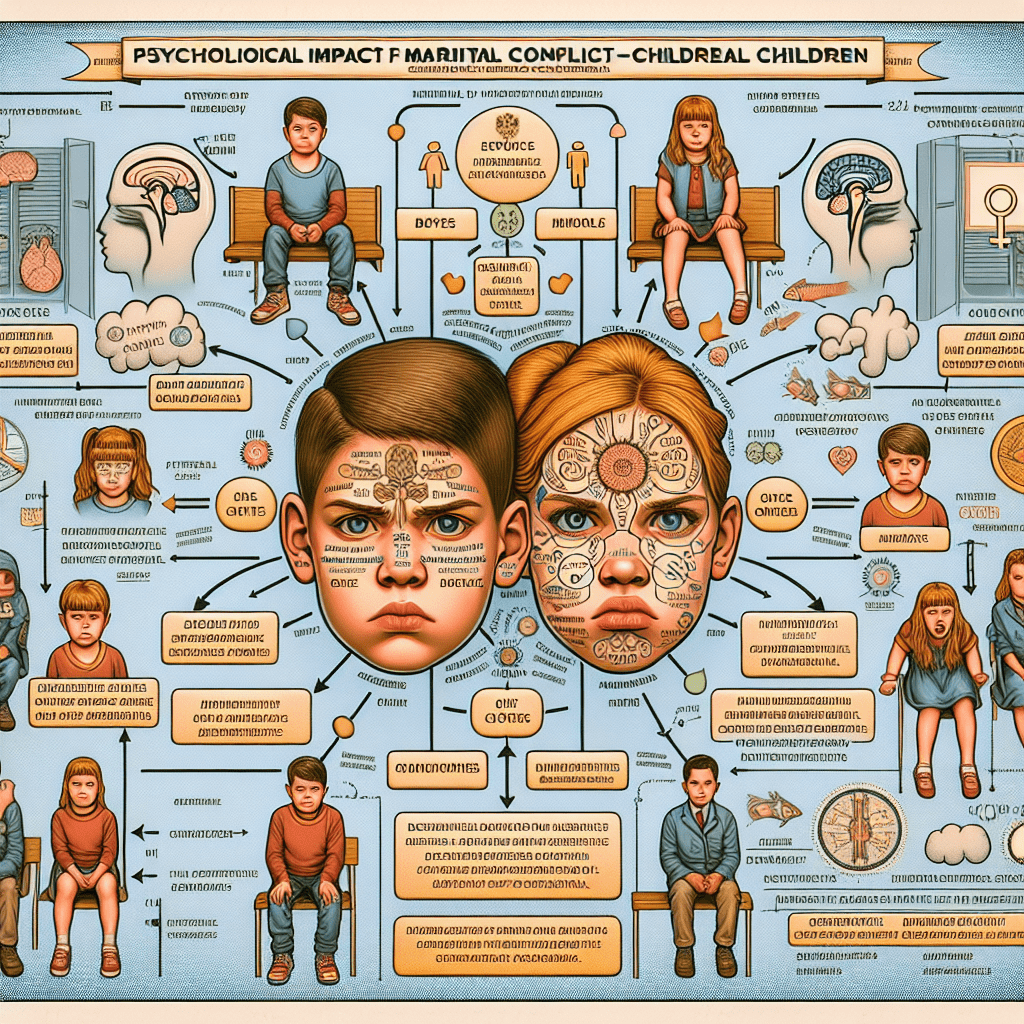Introduction: Where Battles at Home Touch Young Hearts
Imagine a household where voices rise, anger simmers, and walls seem to echo with tension. For children growing up in such environments, the impact of parental conflict can extend far beyond the immediate discomfort. But here’s the intriguing twist: these effects don’t affect every child equally. This is the fascinating crux of the research paper titled “Exposure to marital conflict: Gender differences in internalizing and externalizing problems among children”. The study explores how boys and girls may react differently when confronted with conflict in the family, influencing their emotional and behavioral worlds.
At the heart of the matter is the psychological ripple effect that tumultuous family dynamics can unleash. It’s not just about the arguments themselves, but about the silent scars they leave on young minds. This paper delves into the nuanced ways children respond, with internalizing symptoms like anxiety and depression, or externalizing behaviors such as aggression and disobedience—and how these vary based on gender. Curious to know more? Let’s dive into the key findings and unravel what this means for children’s mental health.
Key Findings: Unraveling the Gendered Impact of Conflict
The research highlights intriguing patterns that underscore the different ways boys and girls experience parental disputes. First, an important takeaway is that not all conflicts are equal; the nature of the fights matters. Constructive marital conflict, where even disagreements are approached with cooperation, can have some surprising benefits. For both boys and girls, such cooperation inversely related to developing both internal and external problems.
On the contrary, when conflicts turn destructive—marked by stonewalling, avoidance-capitulation, or verbal aggression—the outcomes shift significantly based on gender. For instance, boys seemed more prone to externalizing problems like aggression and defiance when exposed to verbal aggression and avoidance tactics. It’s as if the intensity of the outward conflict finds echoes in their external behaviors. In contrast, girls were more affected internally. They exhibited increased internalizing problems such as anxiety and withdrawal, especially when faced with avoidance-capitulation and stonewalling. The study vividly illustrates how gender nuances can alter the landscape of emotional and behavioral outcomes in children faced with parental discord.
Critical Discussion: Navigating the Stormy Seas of Family Dynamics
These findings bring to light crucial considerations for both researchers and parents alike. It’s essential to understand that children are not merely passive observers in the face of their parents’ conflicts; they are deeply impacted participants. When we contrast these insights with prior research, familiar themes of vulnerability and resilience emerge, but with unique gender-specific nuances.
Previous studies have hinted at how boys and girls may respond differently to stress, with this research offering a more targeted lens on the subject. Traditional theories suggest that boys often externalize their distress through action-oriented expressions, while girls might internalize theirs, leading to emotional struggles. This study echoes those sentiments, yet with precision, pinpointing how certain conflict tactics trigger these outcomes.
For instance, when parental fights involve avoidance strategies, boys seem to act out, perhaps reflecting an attempt to force engagement and reaction. Meanwhile, girls may internalize, possibly perceiving the same avoidance as dismissal or lack of care. Such differing perceptions can explain why avoidance is so insidiously impactful. In context, the findings serve as a potent reminder of the complex dance between nature and nurture in shaping children’s psychological landscapes. By examining familial interactions under a magnifying glass, the study enriches our understanding of childhood psychosocial development and sets the stage for more targeted interventions.
Real-World Applications: Transforming Understanding into Action
With these insights in mind, what practical steps can families and professionals take? First and foremost, awareness is key. Recognizing that children absorb and react to the dynamics around them should propel parents and caregivers to cultivate healthier communication habits. Adopting constructive conflict resolution strategies, like active listening and cooperative problem-solving, could mitigate the negative effects on children, transforming potential moments of discord into opportunities for learning and growth.
For psychologists and counselors working with families, these findings underline the importance of gender-sensitive approaches. Tailoring interventions by understanding the different impacts on boys and girls could shape more effective therapeutic strategies. Educators and childcare professionals can also use this knowledge to foster environments that promote emotional expression and resilience in students, offering support that aligns with their unique coping mechanisms. The insights from this research ripple outwards, calling for a collective shift towards nurturing positive family engagements to safeguard and enhance children’s mental well-being.
Conclusion: Charting New Paths in Understanding Family Conflict
This research paper not only highlights the profound ways in which family dynamics influence children but also opens the door to fresh avenues of understanding and intervention. The distinct gender differences in how children internalize or externalize problems in response to marital discord remind us that even in shared environments, personal experiences can vastly differ. As we continue to explore the effects of exposure to marital conflict, these nuanced insights pave the way for more informed discussions and compassionate actions that respect the unique psychological worlds of boys and girls. The question that lingers is: how can we further harness this knowledge to create environments where all children thrive despite the conflicts they witness?
Data in this article is provided by PLOS.
Related Articles
- Unraveling the Complexity: Alcohol Use Disorder and Co-Occurring Addictions in Swiss Youth
- Exploring the Inner Workings of Young Minds: How Thinking Styles Shape University Students’ Mental Health
- Shining a Light on the Dark Corners: Understanding PTSD in Prison Settings
- The Heart Speaks: Decoding Connection in Neurotypical and Asperger Conversations**
- Exploring New Frontiers in Adolescent Anxiety Treatment: The Promising World of Internet-Based Therapy
- The Temptation Tug-of-War: Impulsivity in Young Minds
- Mindfulness Unleashed: Healing Chronic Pain and Embracing Acceptance
- Unraveling Preschool Peer Dynamics: Early Warnings and Family Influences
- Sweet Dreams and Silent Nights: How Non-Pharmacological Interventions Can Help Children with Autism Get Better Sleep**
- The Surprising Truth About Brain Training: Can Cheap EEG Devices Boost Your Alpha Waves?
